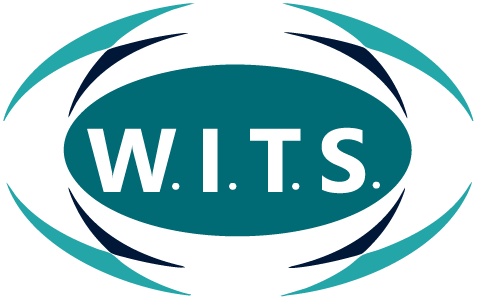
Building Bridges for Lasting Success Onboarding New Clients with Confidence
Building Bridges for Lasting Success Onboarding New Clients with Confidence
Introduction
Starting a new business relationship can be both exciting and daunting. For entrepreneurs, small business owners, and personal trainers, the key to long-term success often lies in how effectively they onboard their new clients. A well-structured onboarding process not only sets the tone for the relationship but also lays the foundation for sustained growth. In this blog post, we'll explore why a robust onboarding process is crucial, define what it entails, and offer actionable insights to help you create an exceptional client experience right from the start.
What is Onboarding? Defining the Process for New Clients
Onboarding refers to the initial phase of welcoming and integrating new clients into your business. It's more than just a meet-and-greet; it's about ensuring that clients understand your services, feel supported, and are set up for success. This process can include various steps, such as initial consultations, setting up accounts, providing necessary documentation, and offering training or tutorials. The primary goal is to make the client feel comfortable and confident in their decision to choose your services.
The Benefits of Effective Onboarding for Long-Term Success
Effective onboarding offers numerous advantages that contribute to long-term success. First, it builds trust and rapport, which are essential for any business relationship. When clients feel valued and understood, they are more likely to stay loyal and recommend your services to others. Additionally, a well-executed onboarding process can reduce misunderstandings and set clear expectations, leading to smoother interactions down the line. Ultimately, satisfied clients are more likely to renew contracts and invest in additional services, driving sustainable growth for your business.
Key Elements of a Successful Onboarding Strategy
Personalization for Different Client Types
No two clients are alike, so your onboarding strategy should reflect this diversity. Personalization involves tailoring your approach based on the client's industry, needs, and preferences. For instance, a personal trainer might customize workout plans and dietary advice based on a client's fitness level and goals, while a business consultant might focus on industry-specific challenges and opportunities. By taking the time to understand and address the unique needs of each client, you demonstrate your commitment to their success.
Setting Clear Expectations and Goals
From the outset, it's crucial to establish clear expectations and goals. This includes outlining the scope of your services, timelines, deliverables, and any responsibilities the client may have. Transparent communication helps prevent misunderstandings and ensures that both parties are on the same page. For example, a small business owner might provide a detailed project plan, including milestones and deadlines, to ensure the client knows what to expect and when.
Utilizing Technology for Efficiency
In today's digital age, leveraging technology can significantly enhance the onboarding process. Tools such as customer relationship management (CRM) software, automated email sequences, and project management platforms can streamline communication and keep everything organized. For example, a personal trainer might use an app to track client progress and send automated reminders for upcoming sessions. By integrating technology into your onboarding strategy, you can save time and provide a seamless experience for your clients.
Best Practices in Onboarding New Clients
To ensure a successful onboarding process, consider implementing these best practices:
- Welcome Kit: Provide new clients with a welcome kit that includes essential information, resources, and contact details. This can help them feel prepared and supported from day one.
- Regular Check-Ins: Schedule regular check-ins during the initial phase to address any questions or concerns and to ensure the client is progressing smoothly.
- Feedback Loop: Encourage clients to provide feedback on their onboarding experience. Use this information to make continuous improvements and demonstrate your commitment to their satisfaction.
Case Studies Successful Onboarding Strategies in Different Industries
Personal Training
Consider the case of a personal trainer who successfully onboarded a new client by conducting a thorough initial assessment, creating a personalized fitness plan, and scheduling weekly check-ins to monitor progress. This approach not only helped the client achieve their fitness goals but also built a strong, trusting relationship.
Small Business Consulting
In the realm of small business consulting, a consultant who provided a detailed project plan, conducted regular progress reviews, and offered ongoing support saw significant improvements in client satisfaction and retention rates. By setting clear expectations and maintaining open communication, the consultant ensured that clients felt valued and understood.
Technology Services
A tech company that implemented an automated onboarding process using a CRM system experienced faster integration times and higher client satisfaction. By providing clients with a user-friendly platform to manage their accounts and access support, the company streamlined the onboarding process and reduced administrative burdens.
Overcoming Common Onboarding Challenges
Despite the best intentions, onboarding new clients can present challenges. Common issues include miscommunication, lack of engagement, and unmet expectations. To overcome these obstacles, it's essential to maintain open lines of communication, actively seek feedback, and be willing to adapt your approach as needed. For instance, if a client seems disengaged, consider scheduling a face-to-face meeting or personalized follow-up to re-establish connection and address any concerns.
Measuring Onboarding Success and Iterating for Improvement
To ensure your onboarding process is effective, it's important to measure its success and make continuous improvements. Key performance indicators (KPIs) such as client satisfaction scores, retention rates, and the time taken to achieve milestones can provide valuable insights. Regularly reviewing these metrics and seeking client feedback will help you identify areas for improvement and refine your onboarding strategy over time.
Conclusion Implementing a Client-Centric Onboarding Strategy for Sustainable Growth
A strong onboarding process is the foundation of a successful, long-term client relationship. By personalizing your approach, setting clear expectations, and leveraging technology, you can create a seamless and supportive experience for your clients. Remember, the goal is not just to onboard new clients but to build lasting partnerships that drive sustainable growth for your business.
Whether you're an entrepreneur, small business owner, or personal trainer, investing in a robust onboarding strategy will pay dividends in the form of increased client satisfaction, loyalty, and referrals. Start implementing these best practices today and watch your business thrive.
Have you recently revamped your onboarding process? We'd love to hear your experiences and insights. Share your story with us and join the blog conversation!
